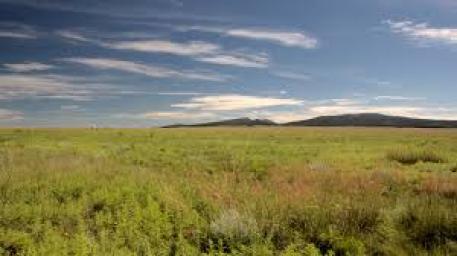| |
|
|
| |

|
Grade:
Grade 4
Subject: English Language Arts
Created by:
Kylee Albritton
Lesson Length:
1 hour 45 minutes
Keywords/Tags:
Reading/Nonfiction/Prairies
Lesson Description:
Read passage "Prairie Changes" and complete vocabulary, discussion, and writing questions. |
Common Core Standards Covered with This Lesson
- CCSS.ELA-Literacy.RI.4.3: Explain events, procedures, ideas, or concepts in a historical, scientific, or technical text, including what happened and why, based on specific information in the text.
- CCSS.ELA-Literacy.RI.4.8: Explain how an author uses reasons and evidence to support particular points in a text.
- CCSS.ELA-Literacy.W.4.1b: Provide reasons that are supported by facts and details.
- CCSS.ELA-Literacy.W.4.4: Produce clear and coherent writing in which the development and organization are appropriate to task, purpose, and audience. (Grade-specific expectations for writing types are defined in standards 1–3 above.)
- CCSS.ELA-Literacy.L.4.4: Determine or clarify the meaning of unknown and multiple-meaning words and phrases based on grade 4 reading and content, choosing flexibly from a range of strategies.
- CCSS.ELA-Literacy.L.4.4a: Use context (e.g., definitions, examples, or restatements in text) as a clue to the meaning of a word or phrase.
|
|
|
| |
|
|
| |
|
|
| |
|
Lesson Content: Reading
|
|
| Instructions: Please read the following reading passage as many times as needed (aloud and silent) before starting to go through other lesson pages. Understanding the content of this passage is very important since the lesson activities will be all about this content. Feel free to print the passage if needed. |
Prairie Changes
In many environments, changes, called succession, take place over time. One kind of plant succeeds another. Weeds start to grow. Then woody plants come. The woody plants take over. The environment becomes a forest. But trees do not survive fires. The lightning and the bison protected the prairie from those changes. So millions of acres stayed prairie.
The animals that live in the prairie needed all that prairie to live. You can understand that when you look at one bird. The meadowlark is bird that nests in the prairie. It gets its food there, too. In summer, it eats insects. In winter, it eats seeds. To stay alive, the meadowlark needs at least 20 acres of prairie land. If 100 meadowlarks live in one prairie, they need a 2,000 acre prairie.
That’s just one bird. The Henslow sparrow needs 80 acres to live. Some small farms are 80 acres. They produce a lot of food for the farm family. The family sells food to people in other places. What if the family buys another 80 acres of prairie to expand its farm. They will grow more food. At least one sparrow and four meadowlarks will lose their habitat.
After the invention of the steel plow, farmers turned more prairie into cornfields. People built more homes and roads. Over time, what was left of the natural prairies were small and widely scattered pieces of prairie. Birds could not nest there. The seeds that the wind blew from the prairie plants fell on highways, in backyards, and in cornfields. The prairie land that was left lost the bison, and weeds began to move in.
What was left of the prairie was in small patches, called remnants. People use the word remnant to talk about leftover pieces of cloth. When people make clothing, some cloth is left. People may use that cloth to patch clothing. Pioneers used remnant cloth to make quilts. But if a prairie remnant is only about ten acres, it has a limited future.
What would the rest of the century bring for prairies? Each year, there were fewer and fewer acres, and in time only remnants of prairie remained in Illinois, the prairie state. Today, less than 1% of the original Illinois prairie is left.
|
|
|
| |
|
|
| |
|
|
| |
|
Task 1: Vocabulary Activity (40 points)
|
|
| Instructions: Please complete the following vocabulary activity by choosing the correct meaning of each word selected from the passage and use of each word correctly in a sentence. |
|
|
|
| Standards Covered with This Lesson Activity: CCSS.ELA-Literacy.L.4.4, CCSS.ELA-Literacy.L.4.4a, |
|
|
| |
|
|
| |
|
|
| |
|
Task 2: Discussion Activity (30 points)
|
|
| Instructions: This discussion forum will have questions for students to respond. Read the posted questions, and respond to each. Students are responsible for posting one initial and and two peer responses for each topic. |
|
| |
Topic Title |
Replies |
|
 |
Why does the author say
The author says "In many environments, changes, called successions, take place over time." Explain what is meant by this and what actual changes occured.
Sent on: Jun 30, 2017 by: Kylee Albritton |
0 |
|
 |
What were the effects of the invention of the steel plow?
After the invention of the steel plow, what changed? How were the prairies effected?
Sent on: Jun 30, 2017 by: Kylee Albritton |
0 |
|
 |
When the author says
When the author says "Today, less than 1% of the original Illinois prairie is left.", what do you think that means for the animals and plants that lived on the prairie?
Sent on: Jun 30, 2017 by: Kylee Albritton |
0 |
|
|
| Standards Covered with This Lesson Activity: CCSS.ELA-Literacy.RI.4.3, CCSS.ELA-Literacy.RI.4.8, |
|
|
| |
|
|
| |
|
|
| |
|
Task 3: Writing Activity (30 points)
|
|
| Instructions: What was the author's purpose for writing the story Prairie Changes? What was the most interesting thing that you learned from reading this story? Use examples from the text to support your answer. Please make your post at least 300 words.
|
|
|
Standards Covered with This Lesson Activity:
CCSS.ELA-Literacy.W.4.1b, CCSS.ELA-Literacy.W.4.4, |
|
|
| |
|
|
University of South Florida Patent & Copyright Office © 2017 (Tech ID # Pending)
|
